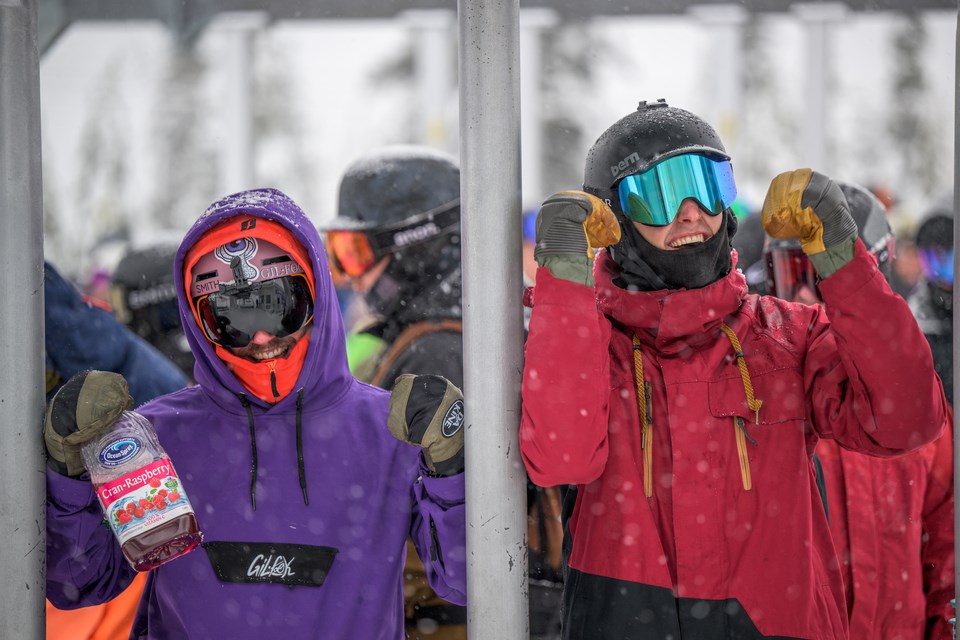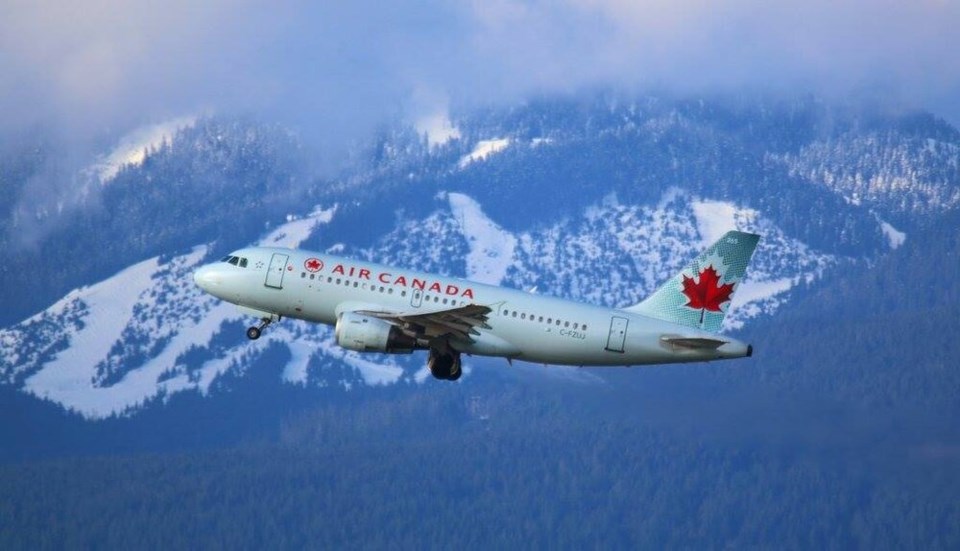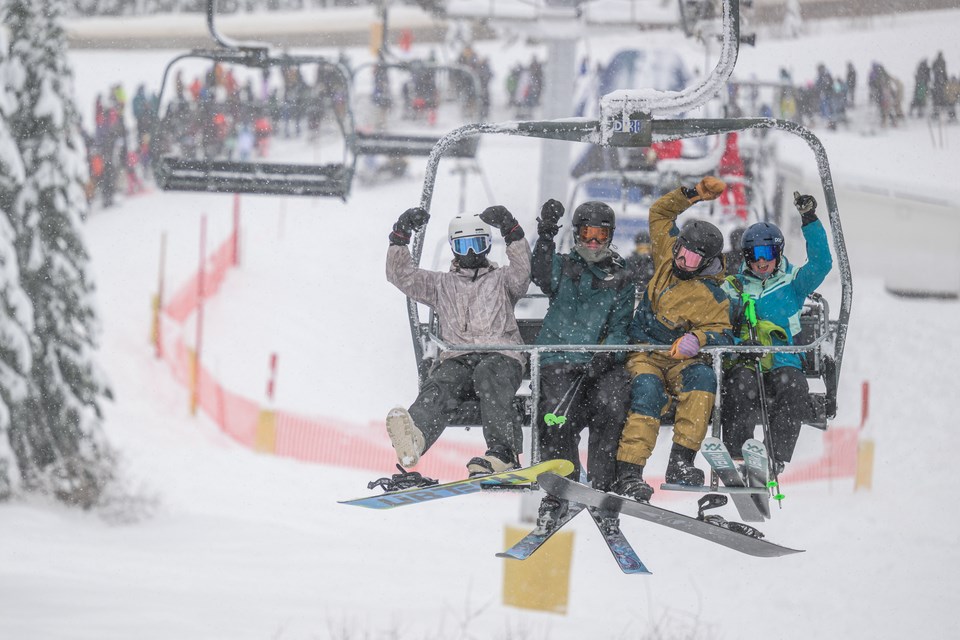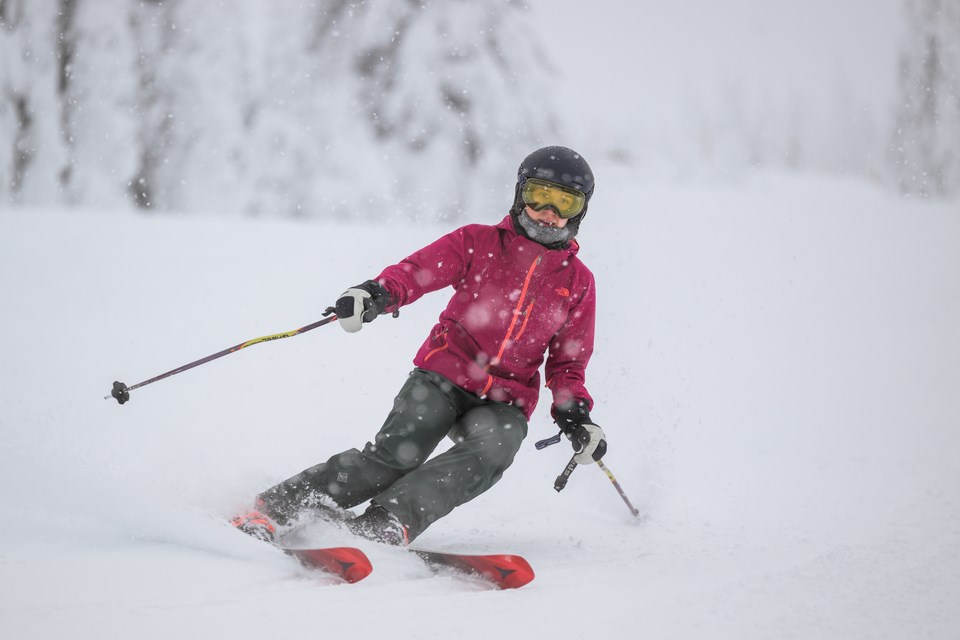Ski resorts across British Columbia are gearing up for a rebound season of deep snow following one of the worst seasons on record.
The 2023-2024 ski season came amid Canada’s hottest winter ever recorded. Across the country, a lack of early season snowfall was followed by an unseasonably warm early January. In B.C., many ski hills struggled to open due to a lack of snow. Conditions were so bad Troll Ski Resort near Quesnel was forced to cancel ski and snowboard events for the BC Winter Games.
This year, however, snow has come early and deep. When Big White Ski Resort opened Friday, its alpine snow base had reached 103 centimetres, conditions so good they attracted a record 2,500 visitors. Michael J. Ballingall, the resort’s senior vice-president, said the opening day snow was among the best the resort has had in its 61-year history.
“Everyone has a ton of snow,” he said, rattling off a list of resorts across the province. “It’s snowing like crazy. I mean this stuff is white gold.”

Sun Peaks Ski Resort near Kamloops opened Saturday with a 78-centimetre base of snow, a major turnaround from last year. On the coast, two of three local ski hills on Vancouver's North Shore opened over the weekend with long lines of skiers.
A couple hours north of Vancouver, the chairlifts at Whistler-Blackcomb started running even earlier. The twin-mountain resort opened Thursday after receiving 91 centimetres of snowfall the previous week, and 228 centimetres since Nov. 1.
Sara Roston, a spokesperson for owner Vail Resorts, said in an email the early season conditions signal a “great winter ahead.”
Big snow years prompt spike in destination skiers
It’s not clear how improved conditions this year have influenced people’s decision to buy season passes at Whistler-Blackcomb. Roston said the company does not provide sales data outside of its quarterly reports.
But according to Ballingall, Big White’s season pass holders remain remarkably consistent year over year. What changes, he said, are how many destination skiers come from elsewhere in Canada or overseas, from the U.S., Europe or Australia.
“I love the locals, but they’re spoiled,” he said. “What changes are visiting family and friends. They invite their friends to come here.”
Vancouver is by far Big White’s biggest customer base for destination skiers. Montreal and Toronto are the next most important source of destination skiers for the Kelowna-area mountain. They also tend to stay longer and spend more money.

This season, Ballingall said room bookings are already up 44 per cent from last year, and he expects new direct flights to Kelowna from Seattle and Los Angeles will be “game changers” for the mountain.
“The playing field has changed,” Ballingall said.
La Niña influence appears to be growing
Michael Pidwirny, a climate researcher focused on ski resorts at the University of British Columbia Okanagan, expects B.C.'s ski industry to see a big boost in business this year.
“Anything would be better than last year,” he said. “Last year was truly one of the worst seasons in [the] history of the West Coast.”
The U.S. National Oceanic and Atmospheric Administration’s Climate Prediction Center has forecast that temperatures in B.C., Alberta and several western U.S. states will be 40 to 50 per cent below normal through December, January and February.
The centre’s seasonal outlook also shows chances of precipitation climbing between 33 and 60 per cent above normal in southern parts of the province.
Pidwirny said other climate models are forecasting similar cooler and wetter than normal conditions across B.C. this winter, something at least partly due to a growing La Niña influence.
La Niña and El Niño are used to describe warm and cool phases of a natural climate pattern that shifts across the tropical Pacific every three to seven years.
As sea surface temperatures swing back and forth between Australia and South America, the cyclical El Niño Southern Oscillation (ENSO) phenomenon causes knock-on effects that disrupt temperature and precipitation patterns thousands of kilometres away — often in somewhat predictable ways.
In B.C., a cycle dominated by an El Niño pattern tends to deliver warmer winters, while La Niña brings colder temperatures.

El Niño conditions started to dissipate in March 2024, right at the end of last ski season. Pidwirny said the latest forecast showing a growing La Niña influence tends to be reliable three to six months into the future.
“Take a look. Conditions are excellent. I can’t imagine it changing in December,” said Pidwirny, who's also an avid skier.
The scientist warned the swing from El Niño to La Niña conditions isn’t the only climatic pattern in flux.
Another natural pattern known as the Pacific Decadal Oscillation (PDO) can lead to swings in sea surface temperatures in the Pacific Ocean between the northern latitudes of 20 and 60 degrees. Since 2016, B.C. has been impacted by a cool or negative PDO phase.
“It’s kind of getting ready to change. And if it moves to a positive phase and you get an El Niño, it will be really bad,” said Pidwirny.
B.C.'s uneven winter advantage
The uncertainty of snow every season has only being made worse by human-caused global warming. That could mean devastating consequences for many of the world's ski areas.
In a series of studies from University of Waterloo researcher Daniel Scott, a high-carbon future would largely wipe out all 99 ski areas in the American Midwest by late century; across Quebec, Ontario and the northeastern corner of the U.S., only 29 out of 171 ski resorts are projected to survive. Out west, places like California, where water sources to make snow are limited, will get “clobbered” in the same way the European Alps will lose out.
In B.C., many coastal mountain resorts also face a difficult future. But for those ski resorts in the province's Interior, Pidwirny has found elevations are high enough and temperatures sufficiently cold that as long as moisture is coming off of the ocean, there will be ample snow to bring in destination visitors for years to come.
A bigger challenge for B.C.'s mountain resorts, said Ballingall, is finding ways to ensure young locals can afford to learn to ski or snowboard — something he said could be partially solved by reintroducing the sports in high school curricula.
“The thrill of sliding on snow won’t go away,” he said. “You just need to teach the next generation in a way that’s affordable.”
With files from Michael Potestio/Castanet
Correction: A previous version of this story had a subheading that indicated a growing El Niño influence in B.C., when in fact, current conditions show La Niña is influencing seasonal climate.




